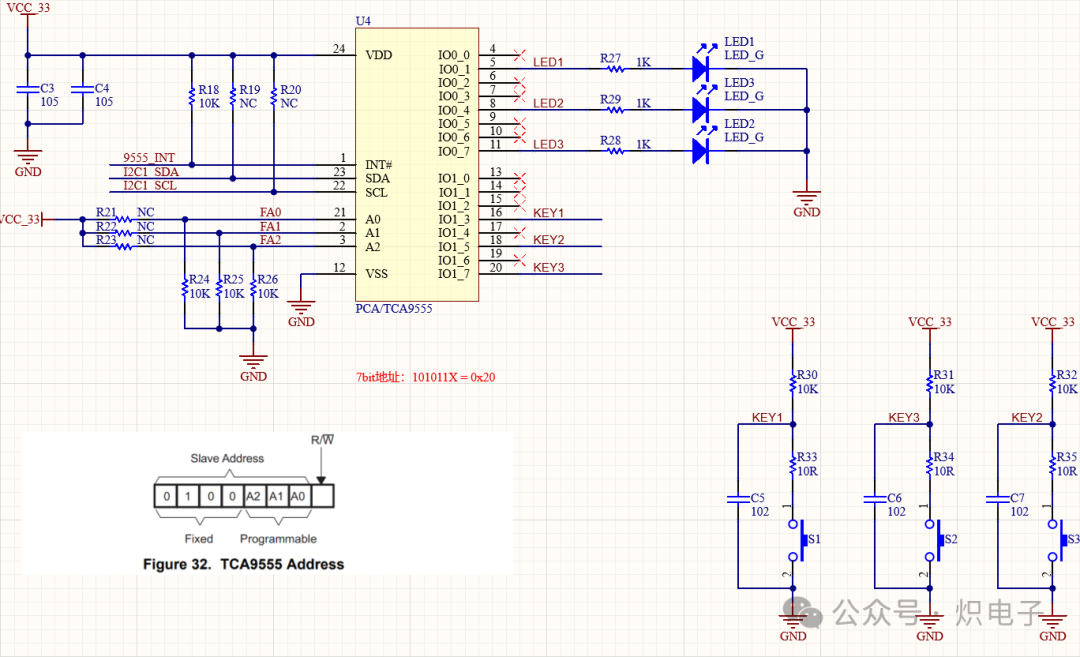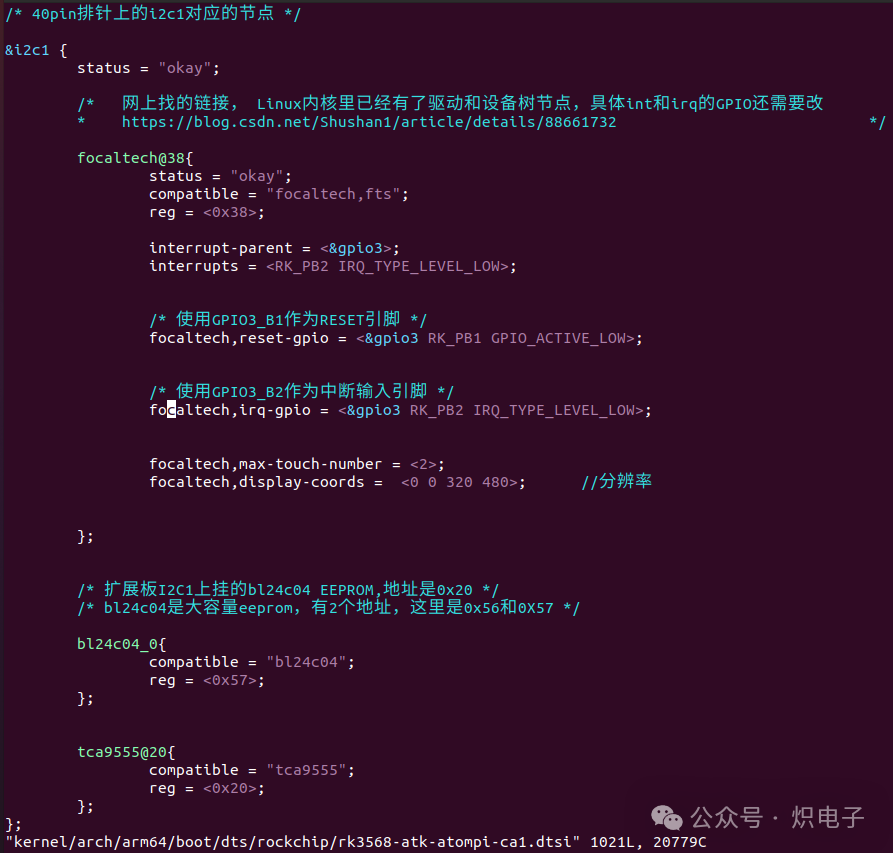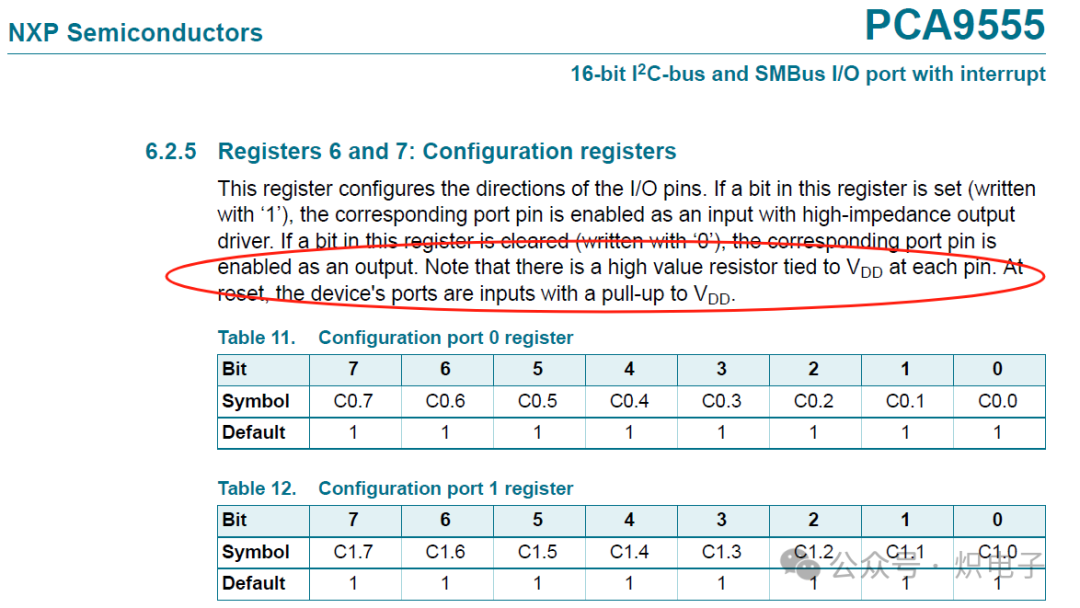#include <linux/module.h>#include <linux/kernel.h>#include <linux/init.h>#include <linux/fs.h>#include <linux/slab.h>#include <linux/uaccess.h>#include <linux/io.h>#include <linux/cdev.h>#include <linux/device.h>#include <linux/of.h>#include <linux/of_address.h>#include <linux/of_irq.h>#include <linux/gpio.h>#include <linux/of_gpio.h>#include <linux/string.h>#include <linux/irq.h>#include <linux/interrupt.h>#include <linux/input.h>#include <linux/i2c.h>#include <linux/delay.h>
#include "TCA9555.h"
static const struct of_device_id tca9555_of_match_table[] = { {.compatible = "tca9555"}, {},};
/* Low-level read function */
int tca9555_read_reg(struct i2c_client *client, u8 reg_addr){ u8 data; // Value of the register, 8 bits
/* Construct data */ struct i2c_msg msgs[] = { /* The first segment of data is the device address (write address) */ { .addr = client->addr, .flags = 0, // flags = 0 write = 1 read .len = sizeof(reg_addr), // Length of data, here it is the length of the register address, 1 byte .buf = ®_addr, // The data to be sent is the reg_addr passed in earlier }, { .addr = client->addr, .flags = 1, // After sending the address, start reading the register value .len = sizeof(data), .buf = &data, // Length of data to read is 1 byte, storage location is data }
};
/* Initiate I2C data transfer */ i2c_transfer(client->adapter, msgs, 2); // The number of msgs to send is 2
return data;}
/* Low-level write function */
void tca9555_write_reg(struct i2c_client *client, u8 reg_addr, u8 data, u16 len){ u8 buffer[256]; // Value of the register, 8 bits
/* Construct data */ struct i2c_msg msgs;
buffer[0] = reg_addr;
memcpy(&buffer[1], &data, len);
msgs.addr = client->addr; msgs.flags = 0; // flags = 0 write = 1 read msgs.len = len + 1; msgs.buf = buffer; // The data to be sent is the reg_addr passed in earlier
/* Initiate I2C data transfer */ i2c_transfer(client->adapter, &msgs, 1); // The number of msgs to send is 1}
static int tca9555_probe(struct i2c_client *client, const struct i2c_device_id *id){ int i = 0;
printk("tca9555_probe!\n");
/* Configure registers: Configure pins as input or output, 0x06, 0x07 */ tca9555_write_reg(client, 0x06, 0x00, 1); tca9555_write_reg(client, 0x07, 0x00, 1);
do {
/* Output registers: 0x02 0x03 */ tca9555_write_reg(client, 0x02, 0x00, 1); tca9555_write_reg(client, 0x03, 0x00, 1);
msleep(800);
/* Output registers: 0x02 0x03 */ tca9555_write_reg(client, 0x02, 0xff, 1); tca9555_write_reg(client, 0x03, 0xff, 1);
msleep(200);
i++; } while (i < 65536);
return 0;}
static int tca9555_remove(struct i2c_client *client){
return 0;}
static struct i2c_driver tca9555_driver = { .probe = tca9555_probe, .remove = tca9555_remove, .driver = { .name = "tca9555", .owner = THIS_MODULE, .of_match_table = tca9555_of_match_table, },};
static int __init tca9555_init(void){ int ret = 0;
printk("tca9555_init\n");
ret = i2c_add_driver(&tca9555_driver);
if (ret < 0) printk("i2c_add_driver is error\n");
return 0;}
static void __exit tca9555_exit(void){ i2c_del_driver(&tca9555_driver);
printk("tca9555_init\n");}
module_init(tca9555_init);module_exit(tca9555_exit);
MODULE_LICENSE("GPL");MODULE_AUTHOR("xx");



